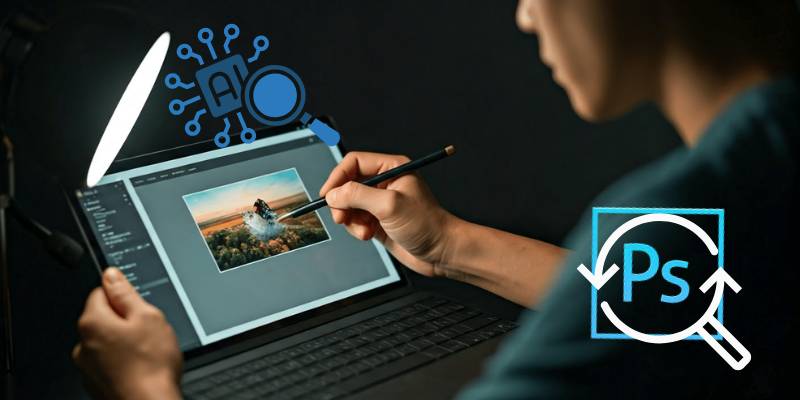I’ll be honest—picking a photo editing tool in 2025 feels a bit like standing in front of a buffet table that’s twenty feet long. Everywhere you turn, there’s something new, shiny, and promising to make your creative life easier.
But here’s the tricky part: which one actually delivers, and which one’s just another dish that looks better than it tastes?
That’s the question a lot of us are asking. Whether you’re a professional photographer, a digital artist, a marketer, or just someone who loves posting polished shots on Instagram, AI photo generators have completely changed the way we work.
It’s no longer about painstaking manual editing—it’s about efficiency, automation, and (sometimes) a dash of magic.
In this article, I’ll walk you through what’s happening in AI photo editing right now, which tools stand out in 2025, and which ones might be the right fit for your style and needs.
Along the way, I’ll also share my own thoughts—because while reviews can be clinical, choosing a tool is always a little personal.
Why AI Photo Editing Has Exploded
Let’s start with the obvious question: why is AI eating up the photo editing space?
The answer isn’t complicated—it’s speed and accessibility. What used to take hours in Photoshop can now be done in seconds. Want to erase a power line from your landscape shot?
Done. Want to change the background from a rainy street to a sunlit beach? Easy. Need a portrait touched up but don’t know where to start? AI has you covered.
A 2024 survey from Statista found that over 68% of professional photographers now use at least one AI-powered tool in their workflow. That number was just 37% in 2021. The growth speaks for itself: AI isn’t some sidekick anymore—it’s the main act.
Key Features Everyone’s Talking About
When you compare tools, you’ll notice some features keep popping up. These are the things most people are either raving about or silently expecting as the new baseline:
- AI-powered background removal: view → This one has practically become a standard. Instead of fiddling with the lasso tool for hours, AI can separate subjects from backgrounds in seconds.
- From sketch masterpiece: view → Many tools now let you turn simple doodles or rough sketches into full, realistic images. It’s not just handy; it feels like magic.
- One-click retouching → Skin smoothing, teeth whitening, red-eye removal—things that used to be a chore are now automated.
- Style transfer → Want your photo to look like a Van Gogh painting or a modern cinematic still? Done with a click.
- Batch editing → For pros, bulk-processing hundreds of images at once with AI assistance is a game-changer.
It’s this mix of creativity and practicality that has made AI adoption skyrocket across industries.
Photographers’ Trends in 2025
Here’s where it gets interesting. The conversation around AI photo editing isn’t just about tools—it’s about people and how they’re reacting.
Among photographers trends have shifted noticeably. A few years ago, many professionals were skeptical, even hostile, toward AI. They saw it as cheating or as a threat to their craft. But in 2025, I see more nuanced conversations.
- Adoption over rejection: Photographers are realizing that AI doesn’t replace their eye—it frees them from repetitive tasks.
- Authenticity matters: There’s still pushback when AI crosses into creating fake realities. Ethical use is a big topic, especially in journalism and documentary photography.
- Creative expansion: Many artists are blending traditional photography with AI edits, treating AI as another brush in their toolkit rather than the whole canvas.
The divide hasn’t vanished, but it’s softening. I’ve talked to wedding photographers who use AI to retouch skin tones faster, but they’ll never generate fake skies or alter expressions. For them, AI is about workflow, not deception.
The Top AI Photo Editing Tools in 2025
Alright, let’s get into the meat of this article. Which tools stand out this year, and why? I’ll break down some of the leaders and what makes them special.
- Adobe Photoshop with Firefly AI
You can’t talk about photo editing without mentioning Photoshop. In 2025, Adobe’s integration of Firefly AI has made Photoshop feel like a whole new app.
- Strengths: Precise controls for pros, generative fill that actually understands context, seamless background swaps.
- Weaknesses: Subscription costs keep climbing, and the learning curve is still intimidating for beginners.
- Best for: Professionals who need the flexibility of traditional editing with AI speed.
- Luminar Neo
Skylum’s Luminar Neo has leaned hard into AI and is winning fans among photographers who want results without endless menus.
- Strengths: Sky replacement is unmatched, portrait tools are intuitive, and it has excellent batch editing.
- Weaknesses: Sometimes struggles with fine details, and updates can be buggy.
- Best for: Landscape and portrait photographers who want simplicity without sacrificing power.
- Canva AI Photo Suite
Canva has quietly become a giant in creative tools, and its AI photo editing features in 2025 are surprisingly strong.
- Strengths: Accessible to non-designers, easy drag-and-drop interface, great for marketers.
- Weaknesses: Less precision for professionals, watermarks on free tier.
- Best for: Small business owners, social media managers, and students.
- Fotor AI
Fotor has leaned into being a from sketch masterpiece: view tool, allowing you to take rough ideas and flesh them out into polished photos or illustrations.
- Strengths: Great for concept artists, fun for hobbyists, solid editing tools.
- Weaknesses: Limited compared to Photoshop or Luminar for high-level control.
- Best for: Creative experimentation, beginners who want to play with AI.
- Topaz Labs
Topaz Labs continues to dominate when it comes to sharpening, noise reduction, and upscaling. Their AI is specifically trained for improving existing images.
- Strengths: Breathtaking upscaling, incredible recovery of blurry or noisy shots.
- Weaknesses: Narrower scope—it’s not a full editing suite.
- Best for: Photographers who need to rescue or enhance images rather than build from scratch.
Personal Impressions: What Works Best
Now, here’s where I’ll get a little subjective. I’ve tested a lot of these tools, and while the “best” option depends on who you are, I can’t help but lean toward Adobe Firefly as the powerhouse.
Why? Because it feels like the closest thing to a Swiss army knife. But I’ll admit, I also keep Luminar Neo installed because it just gets things done faster. And for marketing projects, Canva’s AI suite is absurdly convenient.
If you’re on a budget, Fotor offers a lot of fun without breaking the bank. And if you’re obsessed with image quality, Topaz is non-negotiable.
So, if you’re waiting for me to crown one champion… sorry, I won’t. The truth is, your use case matters more than anything else.
The Ethical Dilemma
It wouldn’t be fair to discuss AI editing without touching on the ethical debates. Some of the biggest challenges include:
- Truth vs. fiction: When does editing cross the line into manipulation?
- Consent: Should clients always be told when AI editing has been used on their images?
- Cultural expectations: In some industries (like advertising), heavy edits are standard. In others (like news), it’s taboo.
Personally, I think transparency is key. I don’t see harm in swapping a gray sky for a blue one in a wedding album. But in journalism, even a subtle edit can undermine credibility.
Looking Ahead: What’s Next?
So where is this all going? Based on photographers trends and industry predictions, I see a few directions:
- Hyper-personalization: AI will tailor edits to individual styles automatically.
- Mobile-first editing: As phones get more powerful, desktop software may lose ground.
- Ethical watermarking: Expect tools to automatically tag AI-generated edits with metadata.
- AI + AR fusion: We’ll see editing tools merge with augmented reality, letting photographers preview edits in real time during shoots.
And yes, I think regulation is coming. Governments will likely step in to address deepfakes and manipulated media, which will affect how these tools evolve.
Final Thoughts
Choosing an AI photo editor in 2025 is less about “what’s best” and more about “what’s best for you.” For some, that’s a full-featured pro suite like Photoshop. For others, it’s a streamlined, accessible tool like Canva or Luminar.
The good news is, there’s no shortage of options. The bad news? The landscape is evolving so quickly that what’s “top” today might feel outdated in just a year.
So my advice is simple: pick a tool that matches your workflow, experiment often, and don’t be afraid to switch when something better comes along.
AI isn’t here to replace creativity—it’s here to amplify it. But like any tool, it’s only as good as the person using it.


